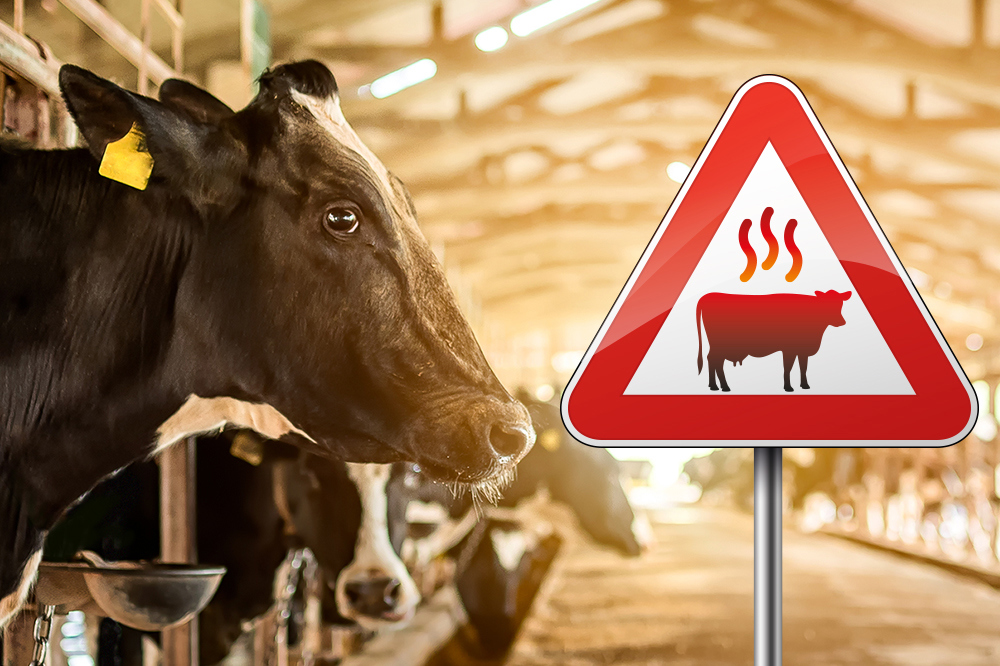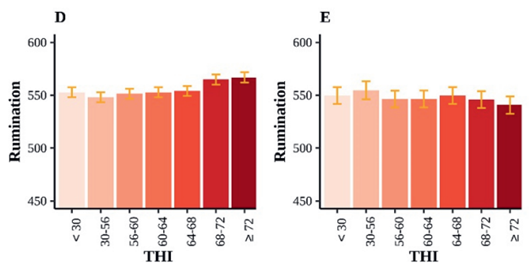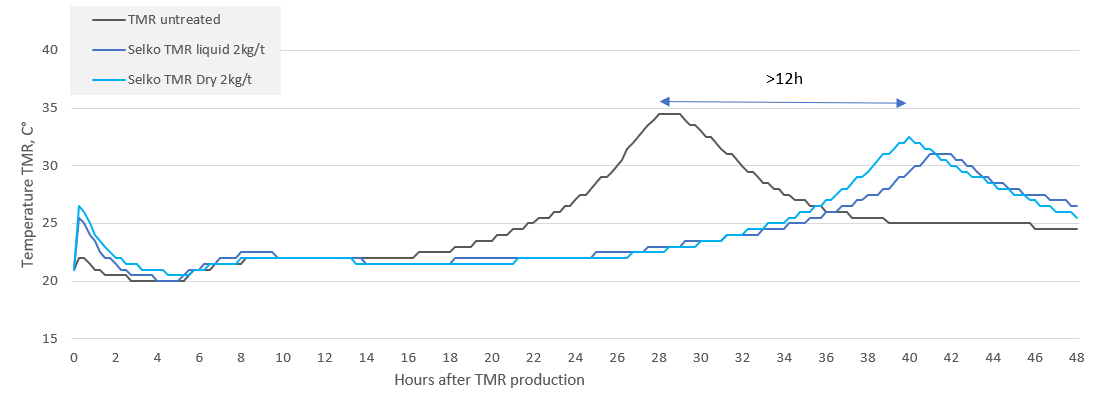
Negative impact heat stress in dairy cattle starts as early as 12 degrees
- Ruminants
Did you know that heat stress in dairy cattle can start as early as 12 degrees Celsius? It may seem surprising, but a recent research and literature review from 2021, conducted by Josje Scheurwater of Utrecht University (the Netherlands), has shown that adapted behaviour in dairy cattle due to heat stress can occur under moderate climate conditions, long before temperatures rise to the previously assumed 16 degrees Celsius.

For four years, from January 2017 to December 2020, Scheurwater observed the behaviour of 4,300 cows (both lactating and dry) on eight commercial farms in the Netherlands. These farms were equipped with both conventional and automatic milking systems, and some offered grazing. Interestingly, none of these farms had a cooling system; they relied solely on natural ventilation combined with one or more fans. For monitoring, Scheurwater used advanced sensors, both on the cows’ necks and legs, provided by Nedap.
Temperature-humidity index (THI) and behavioural changes in heat stress
The effect of heat stress is determined by a combination of temperature and humidity, also known as the temperature-humidity index (THI). This index, first described in 1959 as a measure of human discomfort, also applies to dairy cattle. While traditionally heat stress in dairy cattle is associated with a THI of more than 72, Scheurwater’s research suggests that this effect can occur as early as a THI of 56 and a temperature of 12 degrees Celsius.
On the hottest days, with temperatures above 28 degrees Celsius and a THI of over 72, a significant decrease in eating time was observed, up to 90 minutes per day in lactating cows and 75 minutes per day in dry cows. Moreover, cow lying time decreased by 35 minutes per day in dry cows on conventional farms and by 56 minutes per day on farms with automatic milking systems.

Graph 1. At a THI > 68-72, rumination time increases in conventional farms (D) and decreases in AMS farms (E).
Impact of Selko-TMR (Dry) on feed losses and ration quality
The link between heat stress and feed loss was further investigated by Trouw Nutrition in 2023. A laboratory test showed that adding Selko-TMR and Selko-TMR Dry to the ration can delay heating for up to 12 hours, compared to an untreated ration. This has a significant impact on ration temperature, with a difference of 10 degrees Celsius between treated and untreated feed just 28 hours after mixing.

Graph 2. Both Selko-TMR and Selko-TMR Dry are able to delay heating by 12 hours in a TMR sample - Selko study 2023.
The consequences of heating in the ration are significant. Yeasts and moulds use the sugars in the ration as fuel, leading to the production of CO2 and moisture. This results in a loss of nutritional value, reduced dry matter intake, selective eating behaviour and ultimately a decrease in milk production. Moreover, these microbial activities put pressure on gut health and the immune system.

Graph 3. Effect of heating in a TMR sample on temperature (blue) and sugar content (orange) after mixing - Selko study 2023.
Strategies for effective management of heat stress
Heat stress not only challenges the welfare of dairy cattle, but also the quality and intake of feed. To reduce the negative impact of heat stress on dairy cattle, thoughtful management is essential. Besides offering fresh feed regularly, feeding more often and paying attention when adding water, products such as Selko-TMR (Dry) can be a valuable addition. By combining these strategies, farmers can optimise the health and productivity of their dairy cattle, even under challenging climatic conditions.
For more information reach out to Eric van der Wijst.